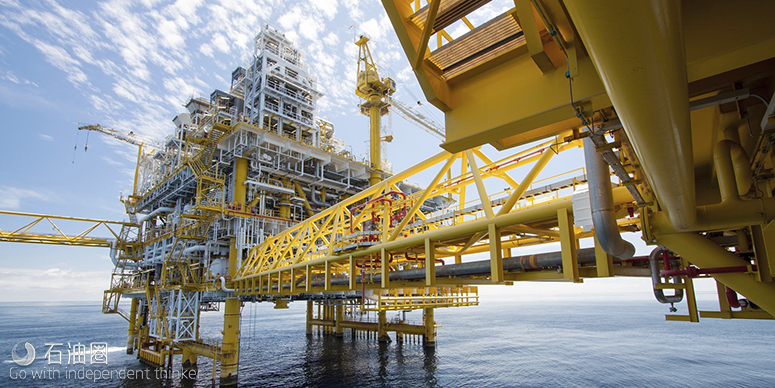Year-over-year revenue growth returns
Schlumberger (ticker: SLB) announced first quarter earnings today, reporting net earnings of $297 million, or $0.20 per share. Total revenue was $6.89 billion, up from the $6.52 billion earned in Q1 2016. This is the first year-over-year revenue growth the company has seen in the last two years.
The resurgence of U.S. shale drilling has been the primary driver of this quarter’s revenue growth. Drilling and fracturing led revenue growth but artificial lift and surface systems also grew, according to Schlumberger Chairman and CEO Paal Kibsgaard. Like Halliburton, Schlumberger is working to bring its frac fleets and other operations back online quickly.
Schlumberger reports that revenue from its hydraulic fracturing and directional drilling services in the U.S. generated 16% sequential revenue growth and 66% incremental margins. This growth was due in large part to pricing recoveries, as the much-predicted service cost inflation comes to pass.
GOM, International activity down
Gulf of Mexico activity is another story, though. In Schlumberger’s conference call, President of Operations Patrick Schorn noted that the deepwater rig count has dropped by 15 at the end of March, which represents a reduction of 74% compared to activity levels in 2014. Seismic activity has declined by similar levels, “leaving offshore revenues at unprecedented low levels.”
“In parallel with these record low level activity,” Schorn commented, “product and services pricing has in several recent cases fallen to levels that make it impossible for us to uphold our operating standards and at the same time turn a profit in this extremely challenging operating environment. We are therefore in the process of redeploying both service capacity and technical support resources from the U.S. Gulf of Mexico to other more viable markets.”
International activity also has not recovered. Revenue from international markets declined 7% sequentially, from $5.3 billion in Q4 2016 to $4.9 billion in Q1 2017. Seasonal declines in activity were worse than usual, particularly in China, Russia and the North Sea. Lower activity in the Middle East and production constraints in Ecuador also hampered results.
On a positive note, revenues in Latin America and Africa were each flat sequentially, indicating that the regions have reached the bottom of the cycle.
Kibsgaard believes that four areas are critical for the oil and gas industry to restore its strength and advance its capabilities:
1.E&P spending must rise to meet growing hydrocarbon demand in upcoming years
2.Investments in research and engineering must be protected and encouraged through the entire oil and gas value chain
3.New business models that encourage closer technical collaboration and commercial alignment between operators and suppliers
4.Broader and more integrated technology platforms that combine hardware, software, data, and expertise
OneStim JV with Weatherford combines frac fleets
Schlumberger and Weatherford announced the creation of OneStim in late March, a joint venture to combine the companies’ pressure pumping services. Schlumberger and Weatherford will own 70% and 30% of the venture, respectively, but Weatherford will contribute approximately 40% of the assets in this venture. Schlumberger will make up the difference with a $535 million payment to Weatherford at transaction close. This joint venture will create a pressure pumping player that rivals Halliburton in scale, and accomplishes Weatherford’s goal of selling off its pressure pumping business.
Q&A from SLB Q1 2017 conference call
Q: So, Paal, so could we go back to the U.S. a little bit? And obviously, the OneStim is a surprising JV and interesting to see. So could you talk a little bit about your strategy there as far as redeploying the frac plate into the U.S. market? And if you could even have a target horsepower as you exit 2017? And maybe a little bit about the logistics of the JV.
Kibsgaard: Yes. I think we need to separate the JV from our current hydraulic fracturing business in North America land. The JV will, obviously, include all that business when it’s closed. But as of now, we continue to manage our business in a standalone fashion, while we are preparing to close the JV as soon as possible. So I will comment briefly on our plans for activation of capacity for the base business today, and I’ll have Patrick give you a few comments around the OneStim JV and the plans post closure.
So if you look at the situation today on our fracking business, we always said that as soon as we have a clear pathway towards profitability, we will start actively reactivating our idle capacity. This point in time actually passed in the first quarter, so towards the back end of the first quarter we actually started actively reactivating our idle capacity. And this process is going to accelerate in the second quarter and also going into H2. So based on the current plan we have at this stage, we plan to have our entire idle capacity from the Schlumberger side deployed during the fourth quarter of this year. So this is the current plan of reactivation.
We are getting significant traction on pricing. We are actively hiring people both for the well side operations and for the vertical integration part, including the transportation side of things as well. And I think the balance we have between the in-sourcing of our vertical supply chain, together with still a very close working relationship with our suppliers – and just to be clear, we are not looking to fully vertically integrate. We will have a certain amount of our capacity vertically integrated, and we will continue also to work closely with our suppliers both on the sand mine side as well as transportation and distribution.
So we will continue now in the coming quarters to actively redeploy. And, obviously, when we close the OneStim JV, these resources and these businesses will all be combined in OneStim, which will then just continue on the same process.
So, Patrick, you want to say a few words about where we stand on OneStim and plans?
Schorn: So regarding the OneStim joint venture, which is a 70/30 joint venture with Weatherford for North America land for hydraulic fracturing and completion, it really creates a new industry leader in terms of hydraulic horsepower and multistage completions. Through its scale, it will offer a cost-effective and competitive service delivery platform, which is uniquely positioned to provide customers with leading operational efficiency and best-in-class hydraulic fracturing and completion technologies. Importantly, reliable equipment availability for our customers and it will also improve significantly the full cycle shareholder returns from this particular market.
So in this case, Weatherford is contributing its leading multistage completions portfolio around 1 million horsepower in pumping equipment and pump damper freighting business. And what we will end up with is a very capital-efficient structure pooling the hydraulic horsepower to gain economies of scale, which clearly is very much timed to benefit from the current market recovery.
Q: It seems like IOCs just don’t seem eager to invest offshore. We haven’t really seen much on the step out and. I was just wondering if you could maybe elaborate. We’ve talked in the past maybe five-day big projects potentially being announced in the back part of the year. Has your views on offshore shifted a little bit? I was just wondering if you could help us kind of what is the roadmap you think to recovery in offshore. Is this getting pushed out maybe more into 2018 event and when we start to see some of these projects awarded?
Kibsgaard: Yeah, we see the same as you? If you look at jackup utilization, I think there is a slight uptick on it, so I think there is probably some early signs that we’ll get some light work coming our way as an industry in the next couple of quarters. But in terms of bigger projects, I agree with you, we haven’t seen anything yet.
So I think the main thing here is for the IOC customers to basically get a better medium-term view on oil prices. But I would assume that they’re also looking for what the floor could be and maybe awaiting potentially what OPEC is going to do as we go into the late May meeting around whether they extend the production cuts or not.
I think the increase in offshore activity or shallow water activity is probably more going to be a second half of the year event leading into 2018. So with that, though, it’s still very important for us as a company to at least secure the work that is coming out of projects that are being FID’d, and that’s why we are very happy and excited the fact that we landed the Mad Dog 2 project, for instance.


 石油圈
石油圈
